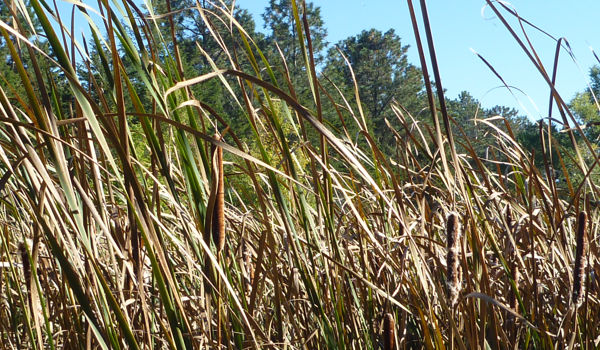Watershed Protection Fund
 This point paper describes PLC’s initiative to establish a special fund for watershed protection, tentatively named the PLC Watershed Protection Fund (herein the “Fund”):
This point paper describes PLC’s initiative to establish a special fund for watershed protection, tentatively named the PLC Watershed Protection Fund (herein the “Fund”):
- Purpose. The purpose of the Fund is to acquire land in the Pickerel Lake watershed on which to establish permanent vegetative buffers to protect and improve the water quality of the lake and its surface tributaries.
- Fund Description. The Fund shall be a special, dedicated fund, separate from regular operating funds of PLC, to be held and used exclusively to endow acquisition of land rights in the Pickerel Lake watershed for riparian buffers that will benefit water quality by stabilizing areas sensitive to erosion from runoff and by filtering and absorbing nutrients, particulate and other pollutants from agricultural activity and other development. (An additional benefit of riparian buffers is improved habitat for natural prairie and aquatic flora and fauna.) Donations to the Fund will be fully tax-deductible. Understandings with donors regarding the endowment character and dedicated use of gifts to the Fund will be memorialized as appropriate in a memorandum of understanding (“MOU”).
- Program Partners. The principal partner for this initiative will be the NE Glacial Lakes Watershed Improvement and Protection Project (GLWIPP). PLC will also seek to partner with the U. S. Fish & Wildlife Service (USF&WS
) , the South Dakota Department of Game Fish & Parks (SDGF&P), and with other NGOs, including the Nature Conservancy, for technical and other assistance. Since significant acreage in the watershed is controlled by the Sisseton Wahpeton Oyate (SWO), it will also be advantageous to seek collaboration with the tribe. - Conservation Easements. The primary means for establishing permanent protective buffers will be conservation easements, whereby landowners sell a contractual promise to constrain the use of a specified parcel in exchange for a one-time lump sum payment in order to achieve certain conservation objectives. Such easements are in widespread use by USF&WS in the Prairie Pothole Region of the Dakotas. PLC expects to follow the USF&WS model and anticipates that in most instances easements and other interests acquired by PLC will be assigned to the USF&WS or to SDGF&P to own and manage. Such easements are normally perpetual and “run with the land.” They are cost effective because they can be acquired for a fraction of the market value of the land. PLC is empowered to acquire any type of land interest which could include a conservation easement for a term of years and even fee title.
- Scientific Basis. The science clearly indicates the necessity for an all-out effort to protect the lake from additional non-point source pollution.1 Decades of scientific data show Pickerel Lake water quality is highly sensitive to land use changes in the watershed and that the accumulated nutrient load now in the lake threatens at times to trigger hypereutrophic conditions. These conditions are irreversible unless aggressive countermeasures are deployed on a sustained basis to curb non-point source pollution on all fronts–lake shoreline, fragile uplands and riparian areas along the major tributaries in the watershed.
- Pickerel’s Watershed. Most of the lake’s
19,799 acre watershed lies North and East of the lake (see Watershed Maps). One Road Lake, 4 and ½ miles East, drains into Pickerel via Chekapa Creek, one of Pickerel’s two major tributaries. Another major tributary, North Creek, drains the northern 1/3 of the watershed. GLWIPP and others have worked for many years to establish voluntary and temporary buffers along portions of these tributaries; however, land use changes, expiring CRP contracts and other factors along these tributaries and elsewhere in the watershed are certain to have a continuing impact on Pickerel’s water quality in years to come. - Long Range Strategy. PLC has undertaken a shoreline survey to assess shoreline conditions and to identify shoreline areas where vegetative buffers can be improved. Survey follow up will include identification and mitigation of point source pollution sites on the lake. The Watershed Protection Fund initiative is the logical “next big piece” of the
long range strategy to protect the water quality of the lake. - Fundraising. This initiative will require significantly more ambitious fundraising than PLC has ever undertaken for normal operations. As with membership, the hope is that all cabin owners on the lake would wish to support the Fund, if not with a lifetime gift then with a gift through their estate plans. No fundraising goal has been set; neither has any target been identified for acquisition. Grant money for this type of conservation initiative is usually made available on a matching basis.
